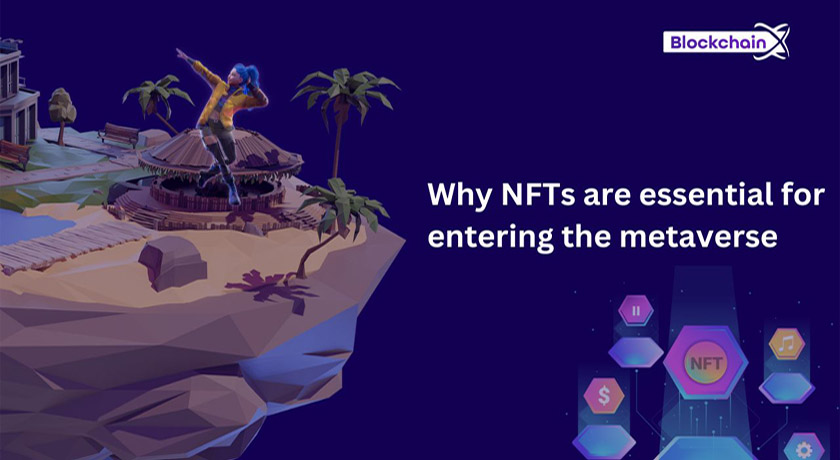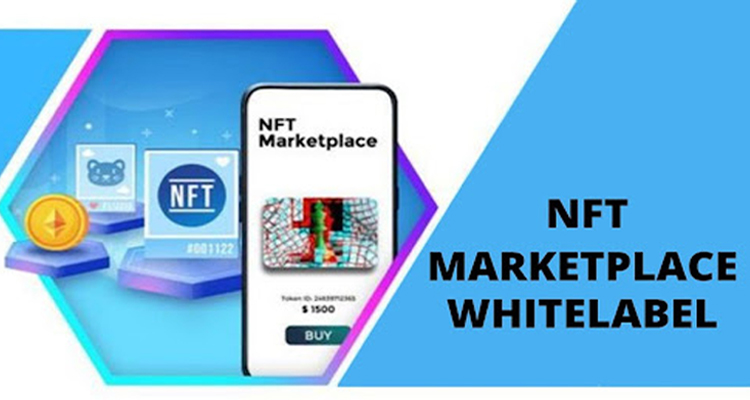These digital assets usher in a new phase of the digital world: the metaverse, with the rapidly growing use cases of NFTs. The launch of Meta by Facebook, which ushers in an era of metaverses where augmented experiences based on metaverse NFT development as pillars for social networks of the Next Generation, serves as the best example of the emergence of metaverses on the world scene.
Particularly in blockchain and other interoperable games where they double as value carriers for pricey digital social media, The NFTs and metaverses are already intricately linked. Despite being a relatively new idea, NFT gaming is well-liked, as seen by NFT’s most recent project, the Initial Gaming Offering (IGO). All IGo NFT collections have been sold out as a result of the positive response this new genre of games has received from gamers and cryptocurrency users, which has led to trade volume exceeding $16 million in just two weeks.
What is the Metaverse?
A blockchain-based digital setting known as a metaverse. Here, visual components are provided by technologies like virtual reality and augmented reality, while the decentralised media provides limitless commercial potential and social engagement. These environments blend cutting-edge technologies and participant engagement models, both at the individual and corporate levels, and are scalable, interoperable, and flexible.
Metaverses are 3D digital environments that include a wide range of activities and components, including financial transactions, game worlds, personal profiles, NFTs, and much more. The flexibility the metaverse provides is credited with its potential. Anyone can make, purchase, and view NFTs in the metaverse in order to acquire virtual products, participate in social communities, create virtual identities, play games, etc. This variety of use cases offers a number of opportunities for monetization of real-world and digital assets, where both companies and users can be incorporated into metaverse frameworks.
Future metaverses will be unified into separate virtual worlds, where NFTs will facilitate cross-chain activities. If you want to learn more about the metaverse, read this article.
Also Read: How to Generate Affiliate Leads and Increase Sales
How will NFTs affect the Metaverse?
The traditional social media paradigm of user engagement, socialisation, and transaction in the metaverse is susceptible to disruption by NFTs. Learn how NFTs can alter the digital landscape.
A Free and Equitable Economy
Users and businesses can now move goods and services from the real world to the metaverse, a decentralised virtual environment. Using novel game models with blockchain-compatible games is one method to bring more real-world assets into the metaverse.
One such strategy that not only engages but also empowers blockchain gamers is the play-for-money gaming paradigm. Players who rely on NFTs can engage in the metaverse’s in-game financial economies and get paid for the value they contribute, basically making money while they play. These kinds of games are also just in the metaverse since participants retain full control for their assets rather than having one game entity manage them like in most conventional games.
NFT IGO releases offer a variety of in-game assets from gaming projects that players may collect and integrate into various gaming settings for their use if you’re wondering how to take part in these in-game financial economies. As evidenced by their great demand, these gaming NFTs in the response to IGO launches, where all NFTs sold out right out of the box. Examples of successful play-for-money games include Axie Infinite ( AXS ), My Neighbor Alice ( Alice ), and many others.
Guilds for play-for-money games will also be important in boosting the appeal of these kinds of games. The NFT resources that guilds buy from games, such as land and assets, serve as facilitating intermediaries by being lent to players who want to use them in their various virtual worlds for profit. In exchange, the guilds receive a modest cut of the revenue.
Due to the fact that players who lack the necessary start-up funds to participate can turn to guilds to obtain an advantage, this promotes an open and fair economy. Guilds make it more equitable for everyone to have the chance to engage in the metaverse economy and lower the entry barrier to play-for-money games for all players.
One of them is Yield Guild Games (YGG), which creates a global community of metaverse users that participate in virtual worlds to gain in-world incentives and earn money by renting or selling the company’s property.
Since users can trade their NFT assets on NFT marketplaces development like NFT, both in-game assets and digital assets, in-world assets can also influence real-world value. The use case for each metaverse module in which NFTs are offered in-game determines how valuable they are economically. This allows users the ability to create any kind of content they desire, whether it’s well-known assets that draw large audiences, distinctive digital art, or specialized NFTs that offer particular gaming abilities and skins.
With the inherent immutability and openness of a blockchain, metaverses provide a transparent and open economy. Additionally, prices are set according to the basic rule of supply and demand, which eliminates the chance of price gouging and artificial inflation. This law is based on scarcity and, when relevant, the on-chain value of an NFT.
One example of the method of operation made possible by the metaverse economy is the delivery of NFT games. Users have the opportunity to enter the NFT gaming market early thanks to IGO’s weekly releases of significant in-game assets from gaming projects. There are also uncommon mystery box drops that include a variety of priceless items for play-for-real money games.
On NFT, users may also find and exchange NFT in-game stuff. On its homepage, NFT creates a daily list of suggested NFT builders and collections, as well as leaderboards listing the top sellers, collections, and NFT builders, to assist newcomers to the market.
Extensions of Social, Communal, and Identity Experiences
NFTs will be essential to the identification, community, and social interaction experiences in the metaverses. You can utilize certain NFT assets to show your support for a cause or to share your opinions about the real world and the virtual world. Due to this, owners of similar NFTs can engage in online communities where they can share experiences and create material with like-minded people. These NFTs are exemplified by the well-known NFT avatars.
NFT avatars stand in for participants’ real or imagined selves. Users can enter and roam across different regions of the metaverse using their NFT avatars as access tokens. When this occurs, NFT avatars serve as an extension of our actual self, giving us full control and flexibility to create and customize them .
Owning an avatar NFT enhances social and community experiences by enabling you to participate virtually in an infinite number of exclusive experiences in the metaverse and in the real world. Through the creation of content and first releases, NFT Avatars are already contributing to the shaping of the experiences and landscapes of the metaverses.
The Bored Ape Yacht Club and CryptoPunks collections are two prominent instances of these identity-shaping avatars, which provide their owners unique rights and access to exclusive groups of rich individuals with prohibited content and even private offline events. Exclusive ticket events for NFTs highlight the importance of NFTs as value carriers that connect the virtual and physical worlds.
Property Ownership: Virtual Real Estate
Users who use NFTs can completely control the lands and spaces they inhabit in the metaverse. The underlying blockchain enables users to establish asset ownership and customize how their virtual properties are used.
Selling property for a profit, renting land for passive income, erecting different buildings like virtual stores on existing land, or organizing social gatherings are a few uses of virtual real estate in the metaverse.
Decentraland is an illustration of the metaverse’s digital real estate market; the two companies recently collaborated to stage a virtual fashion show where designs were sold as NFTs. Musicians are increasingly becoming interested in virtual products because they may perform, sell tickets, and NFT stuff online.
The Future of the Metaverse
The metaverses, though still in their infancy, offer new chances for play, interaction, meeting, earning, and transacting through the usage of NFTs, as well as a variety of potential social and financial prospects.
Metaverses and NFT blockchain gaming will be a feature of Web 3.0, a time when real-world enterprises are spreading into the digital arena and users are learning about the adaptability of these settings, by incorporating virtual reality, gaming, social networking, and cryptocurrency elements.

